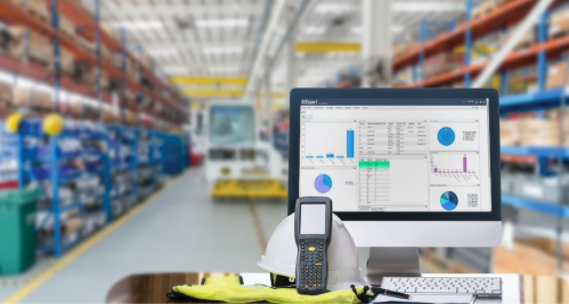
26 Oct The Basics of Warehouse Management Systems
When trying to manage complex supply chains, chances are using a warehouse management system (WMS) will make business operations substantially simpler. For those who may not be familiar with this term, a WMS is a technological system that optimizes day-to-day warehousing functions and assists with supply chain management. These systems typically automate functions such as daily planning, inventory, shipping and receiving. Most 3PL service providers use a WMS due to the high work volume and continuous movement of products in and out of their warehouses. When handling multiple orders and shipments, a WMS will organize, track and fulfill orders at a much more rapid pace. This allows for not only more efficiency, but also error-free order fulfillment. A WMS can also provide exact data to visualize what’s coming in and going out of a warehouse. In today’s rapidly changing warehousing industry of ecommerce expansion and fast-paced order fulfillment needs, these systems are becoming much more sophisticated and can vary in the types of features they offer.
Types of Systems
Standalone
A standalone WMS is the most basic system and provides only the most fundamental warehouse management functions. The software has a basic network and is typically only used for the purposes of internal communications and connectivity within a given company. The features you can expect from standalone WMS are picking/packing, barcode scanning, shipping and receiving. A standalone WMS does not feature any transportation or sophisticated supply chain functions, however. While this system is the most basic, it is also the most affordable and is ideal for smaller warehousing companies with a straightforward workflow.
Cloud-Based
This type of WMS is what is called a “software as a service” model that uses exclusively cloud-based technology and is hosted on a private server. The implementation of these systems is usually very simple and don’t require much maintenance. These systems tend to be much more secure and can handle a substantial amount of data. Cloud-based systems are also known for being extremely user friendly and are able to be accessed on any device. Because of this flexibility, cloud-based systems are ideal for logistics companies that have multiple locations and require several users to be on the system simultaneously.
ERP
Enterprise Resource Planning, or ERP models, are designed to holistically manage all aspects of a company. These systems operate much differently than a traditional WMS because it extends beyond managing logistical needs. ERP systems are capable of managing accounting/finances, supply chain, transportation, human resources, marketing and sales in addition to traditional WMS features (inventory, picking/packing, etc.) ERP systems are also highly automated and distributes information at a much more efficient rate than more basic software models.
As you can see, these systems offer different advantages and have varying degrees of functionalities. The company size, quantity of products and types of services offered will determine what WMS will make the most sense from both a value and efficiency standpoint. In the end, implementing the right WMS will effectively streamline warehousing functions and optimize the logistics process.




